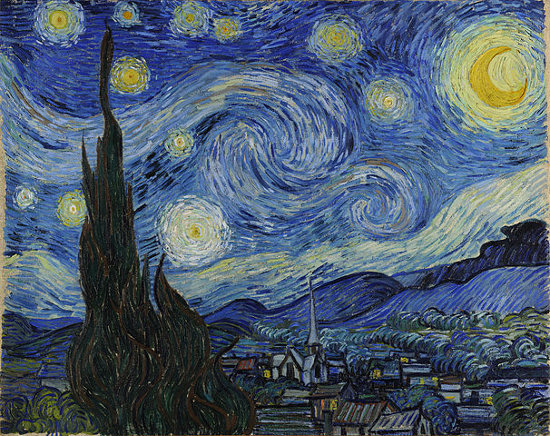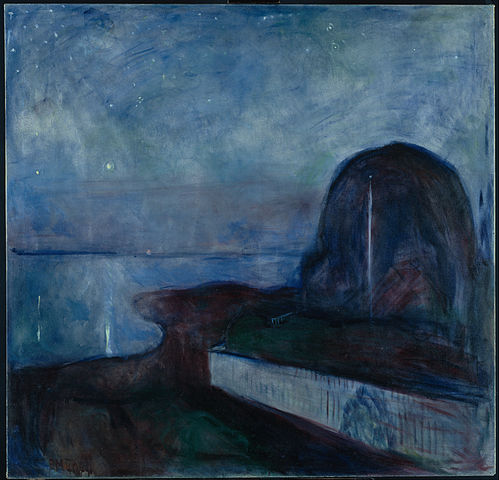
Humans had been fascinated by starry nights long before astronomy became a science. Those twinkling little lights in the heavens were even players in the biblical description of creation. There, God makes them appear in the dome of the sky on the fourth day. Over the centuries, the stars have been a constant source and catalyst for poetic inspiration and curiosity. The great German philosopher Immanuel Kant wrote in 1781: "Two things fill the mind with ever increasing wonder and awe, the more often and the more intensely the mind of thought is drawn to them: the starry heavens above me and the moral law within me."
Painters were also captivated by the stars. Vincent van Gogh's Starry Night (Figure 1), is one of this painter's best-known works. He painted it just one month after his admission, at his own request, to the asylum at Saint-Rémy. One year later he committed suicide. Indeed, the tumultuous, almost violent appearance of the stars in Starry Night was probably a premonition of deep sufferings to come.

Figure 1. Vincent van Gogh's The Starry Night. Museum of Modern Art, New York. From Wikimedia Commons.

Figure 2. The star V838 Mon. Credit: NASA, ESA, and H.E. Bond (STScI).
It has been pointed out that the Hubble image of the star V838 Mon (Figure 2) shows clouds of gas and dust surrounding the star that are very reminiscent of van Gogh's swirling brush strokes.
Less known than van Gogh's is another painting entitled Starry Night, by the Norwegian expressionist artist Edvard Munch (Figure 3). Munch's painting is almost abstract, and it conveys an atmosphere of mystery and drama. Munch wrote once: "I am so fond of the darkness -- it ought to be just like this evening when the moon is behind the clouds -- it is so mysterious."

Figure 3. Edvard Munch's Starry Night. J. Paul Getty Museum, Los Angeles.
From Wikipedia.
There is very little doubt that even with all of our advances in deciphering the cosmos and its workings, the romantic appeal of the stars will continue to enthrall us for generations to come.